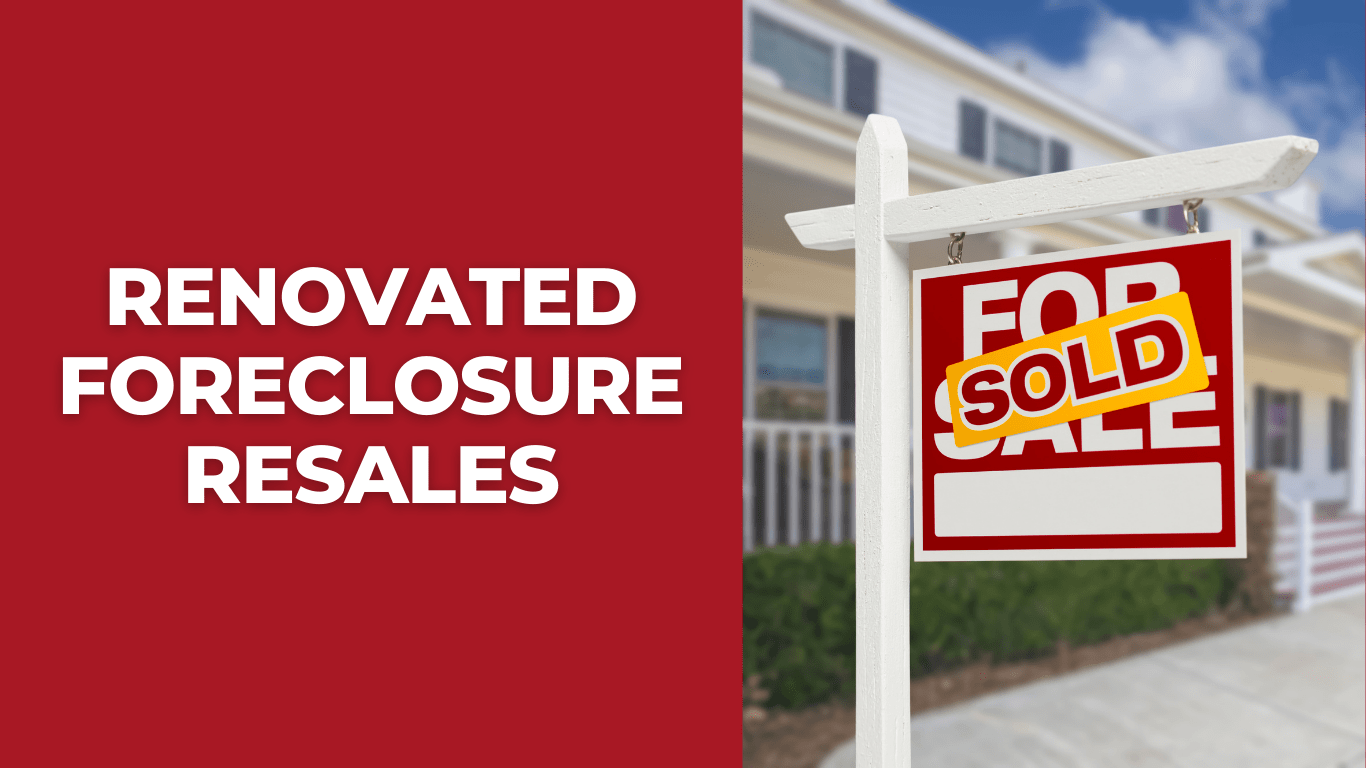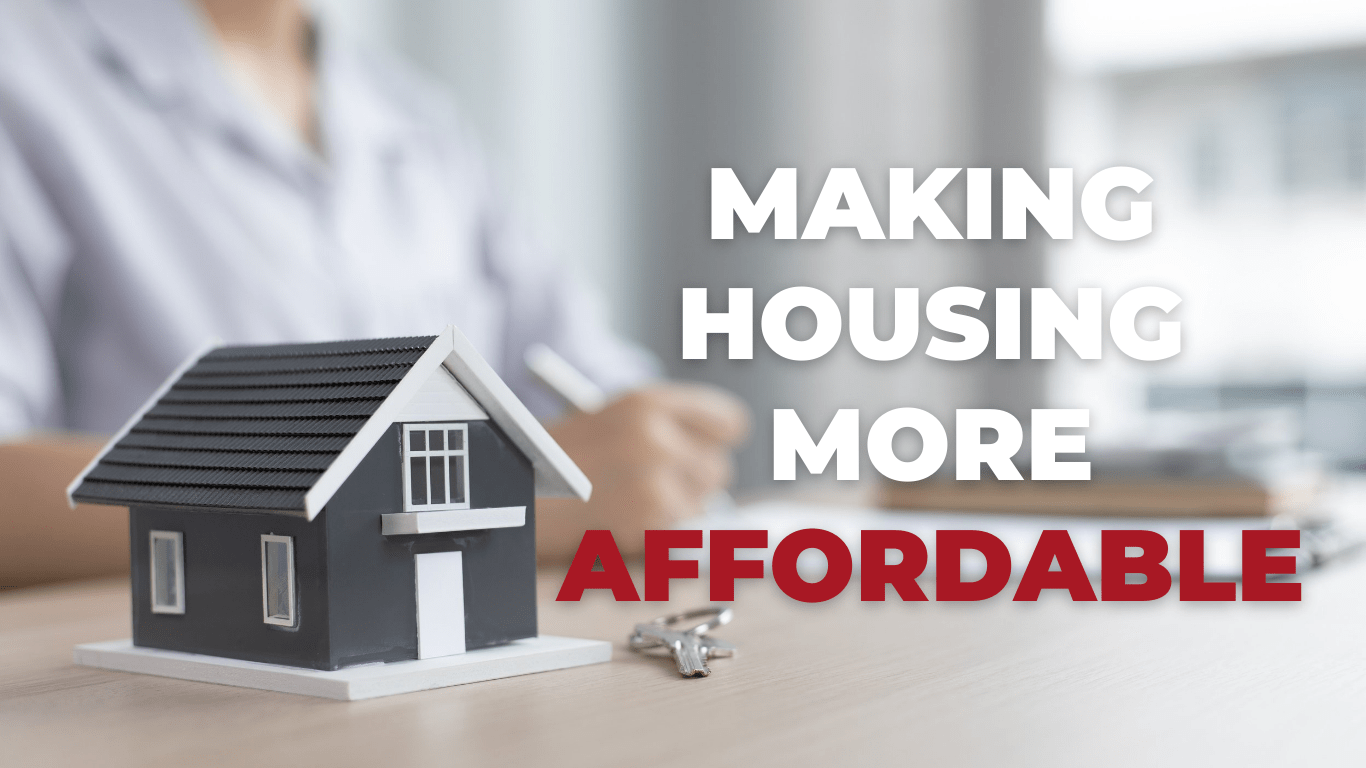
America suffers from a severe shortage of affordable homes. This development did not occur overnight: Over the past 20 years, we have “underbuilt” housing by at least 5.5 million homes. We hope you enjoyed last week’s edition where we talked about How Will Appraisal Technology Evolve In 2022? This week we’re bringing you:
Could renovated foreclosure resales help solve the nation’s increasingly complex affordable housing puzzle?*
An estimated 140,000 renovated foreclosures were sold to owner-occupants in 2020 and 2021.

Sue McCormick is doing her part to help solve the nation’s increasingly complex affordable housing puzzle.
In 2021, McCormick resold two renovated properties that she originally purchased at foreclosure sale on Auction.com in her hometown of Dayton, Ohio. Both properties sold to owner-occupant buyers for under $150,000 apiece.
“I grew up in an area that was predominantly Black, working class, suburb of Dayton,” said McCormick. “Some of the areas where I grew up have taken a big hit. … There are some areas that have been hard-hit by things like drugs and crime. Some of those areas I’m investing in, and they’re starting to turn again so that’s exciting to see.”
McCormick’s efforts are helping to improve neighborhoods and boost homeownership one house at a time in Dayton. Combined with thousands of other local community developers like her, McCormick’s efforts are moving the needle when it comes to quality, affordable housing for owner-occupants nationwide.
An estimated 140,000 renovated properties purchased at foreclosure auction or bank-owned auction were resold to owner-occupant buyers between January 2020 and December 2021, according to an analysis of foreclosure and bank-owned (REO) auction sales data from Auction.com along with public record data from ATTOM Data Solutions. The Auction.com data was extrapolated using the public record data to arrive at the total market estimate of 140,000 resales to owner-occupants. That total market estimate is likely conservative given that some resales occurring in the second half of 2021 have not yet been captured by public record data.
Pessimism Among Young Drives Housing Sentiment Lower*

How low can it go? Well, lower than ever apparently when it comes to consumers who think it’s a good time to a home. The total fell 1 point to a record low of 25 percent in January while 70 percent said the time was not right, a 4 point increase. This brought the net of positive responses down to -45 percent, 60 percentage points below its level a year earlier and an all-time low.
Those opinions, along with answers to three other questions in the National Housing Survey knocked Fannie Mae’s Home Purchase Sentiment Index (HPSI) down 2.4 points from its December reading to 71.8, and 5.9 points below its reading in January 2021.
“Consumer sentiment toward housing softened further in January – the HPSI fell 2.4 points to 71.8 – as affordability and supply constraints continue to limit home purchase opportunities, particularly among younger households,” said Doug Duncan, Fannie Mae Senior Vice President and Chief Economist. “Younger consumers – more so than other groups – expect home prices to rise even further, and they also reported a greater sense of macroeconomic pessimism.
“Additionally, while the younger respondents are typically the most optimistic about their future finances, this month their sense of optimism around their personal financial situation declined. All of this points back to the current lack of affordable housing stock, as younger generations appear to be feeling it particularly acutely and, absent an uptick in supply, may have their homeownership aspirations delayed. On the whole, the latest HPSI results are consistent with our forecast of slowing housing activity in the coming year.”
Ron Terwilliger on how to make more affordable housing*
Expanding the supply of affordable homes for rent and sale must be a national priority.

America suffers from a severe shortage of affordable homes. This development did not occur overnight: Over the past 20 years, we have “underbuilt” housing by at least 5.5 million homes.
Policymakers are rightly focused on helping people afford to purchase or rent a home through down payment assistance, housing vouchers and other programs. The unfortunate truth is that too many households lack sufficient income to cover their housing needs, a situation exacerbated today by high inflation.
But these “demand-side” efforts treat only half the problem. Pouring money into programs that help families afford homes will have little effect if there are too few homes available to move into. “Supply-side” solutions that focus on new construction and the preservation of the existing housing stock are equally important.
Low housing inventory
The lack of adequate supply to match demand is at the core of today’s housing-affordability crisis. In 2021, the overall rental vacancy rate dropped to 5.8%, the lowest level since the mid-1980s. At the bottom end of the income spectrum, the supply shortage is particularly acute: For every 100 low-income households, there are only 55 affordable rental homes available on the market; for every 100 extremely low-income households, there are just 36.
In many communities, lower-income households now find themselves competing with higher-income households for the limited number of rental homes.
Finding highly affordable leads to keep sales coming in
At iLeads, we have many great solutions for mortgage LO’s at a low cost. If you’d like to see how we can help you bring in consistent sales for a great price, give us a call at (877) 245-3237!
We’re free and are taking phone-calls from 7AM to 5PM PST, Monday through Friday.
You can also schedule a call here.

